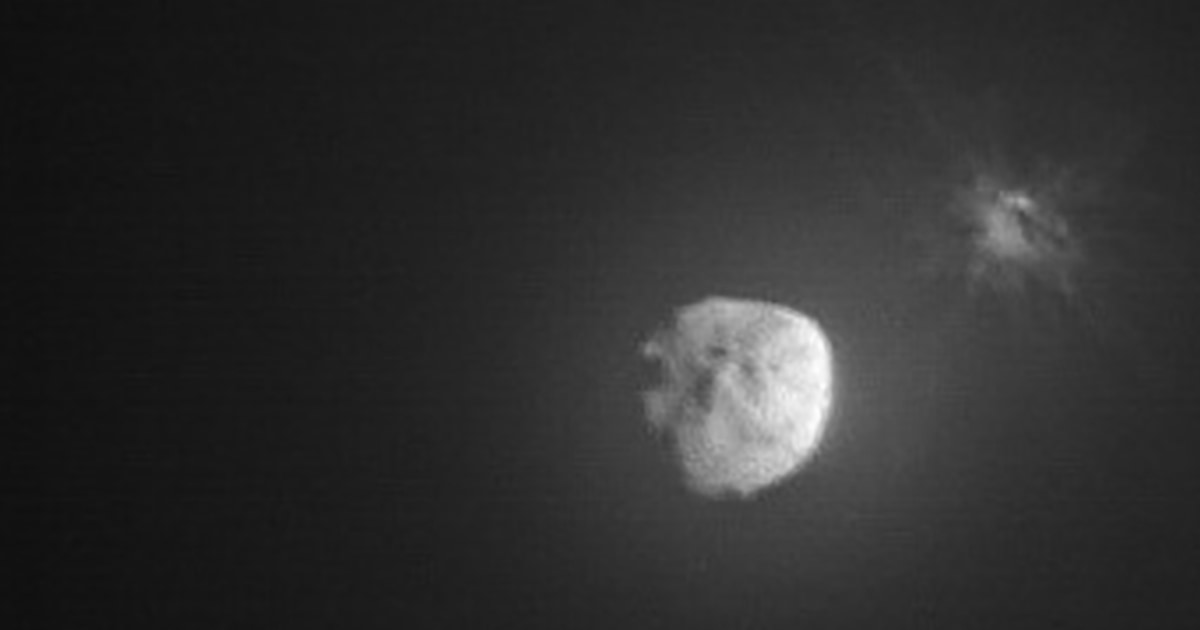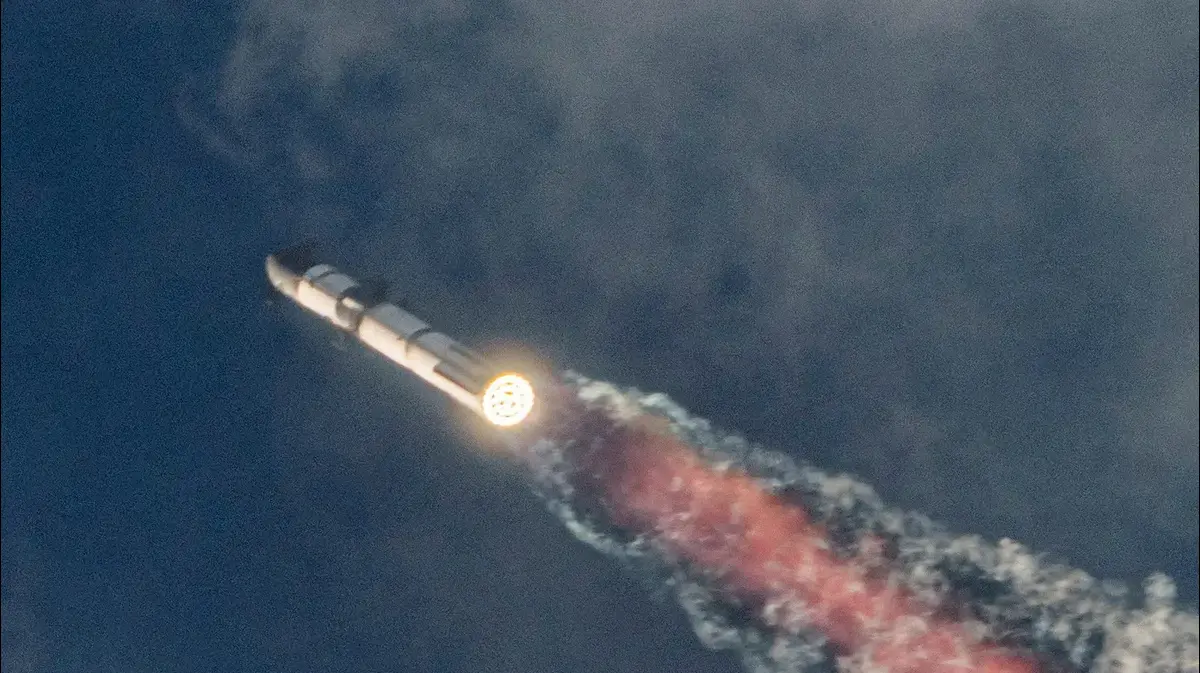By Denise
Chow
A NASA spacecraft successfully altered the orbit of an asteroid by intentionally colliding with it last month, agency officials confirmed Tuesday.
NASA said data obtained in the last two weeks showed that the impact of the DART (Double Asteroid Redirection Test) spacecraft against a small and harmless space rock, known as Dimorphos, managed to alter its trajectory.
The results of the cosmic collision are significant because it
was the first real test of humanity's ability to protect Earth
from potentially catastrophic asteroids.
Photo by the Italian Space Agency a few minutes after the collision of the DART spacecraft.ASI/NASA
"We all have a responsibility to protect our home planet," NASA Administrator Bill Nelson said in a statement.
"After all, it's the only one we have."
The DART mission was a unique opportunity to test a key planetary defense strategy and give scientists the opportunity to assess whether "giving a nudge" to an asteroid can actually change its orbit.
The success of the operation suggests that, given enough time, deflecting asteroids could be
a viable way to save Earth
from a potentially devastating collision with a space rock.
NASA manages to impact an asteroid 7 million miles from Earth: so they will know if they were successful in deflecting it
Sept.
27, 202201:52
"NASA has shown that we are serious as defenders of the planet," Nelson said, adding that the mission was "a watershed moment for planetary defense and for all of humanity."
The DART spacecraft crashed into Dimorphos on September 26, which orbits a much larger asteroid called Didymos.
The two space rocks are more than 6.5 million miles from Earth and
neither posed a threat to the planet
before or after the DART mission.
[DART mission: NASA makes history after crashing a spacecraft into an asteroid in a planetary defense exercise]
Before the spacecraft impact, Dimorphos took 11 hours and 55 minutes to circle Didymos.
Using ground-based telescopes on Earth, astronomers have confirmed that DART shortened Dimorphos's orbit by 32 minutes, down to 11 hours and 23 minutes (with an uncertainty margin of about 2 minutes or so, according to NASA).
Lori Glaze, director of NASA's Planetary Science Division in Washington, said the finding is an important step in understanding the full implications of the DART mission.
This image, taken by NASA's Hubble Space Telescope on October 8, 2022, shows debris that was dislodged from the surface of Dimorphos 285 hours after the DART impact on September 26. NASA/ESA/STScI/Hubble
"As new data is received each day, astronomers will be able to better assess whether, and how, a mission like DART could be used in the future to help protect Earth from an asteroid collision, if we ever find it to be. headed our way," Glaze said in a statement.
Astronomers continue to study the consequences of the cosmic crash
at observatories around the world.
The researchers are focusing, in particular, on measuring how much energy, or momentum, was transferred between the two objects when the DART spacecraft flew head-on into Dimorphos at 14,000 miles per hour.
[All set for NASA's new attempt to launch the Artemis I mission to the Moon]
Scientists, according to NASA, are also studying
the tons of rocks and debris created by the impact.
The DART spacecraft was launched into space in November 2020.
A future mission, led by the European Space Agency, will study the impact crater on the asteroid and examine Dimorphos and Didymos in greater detail.







